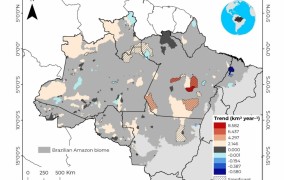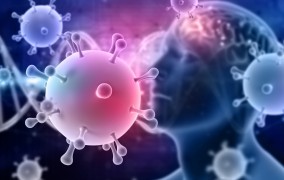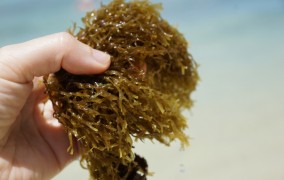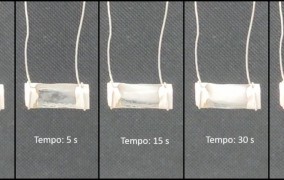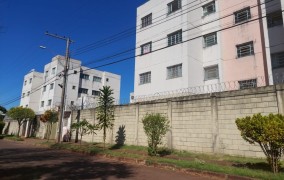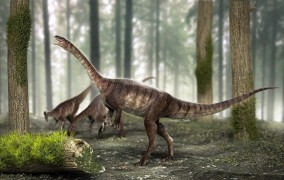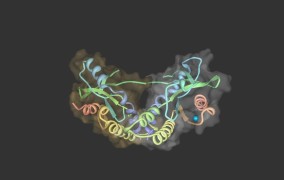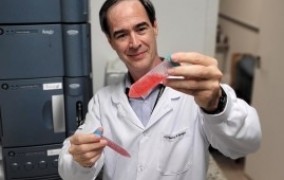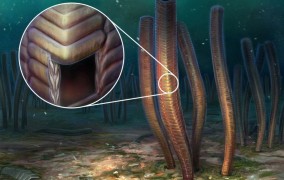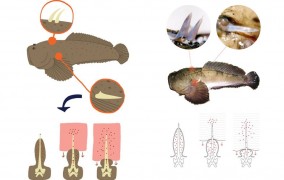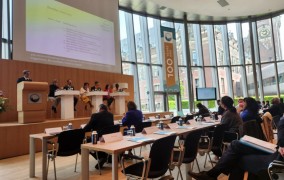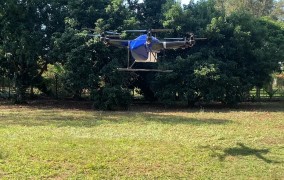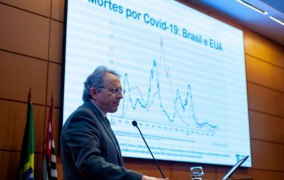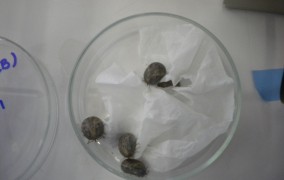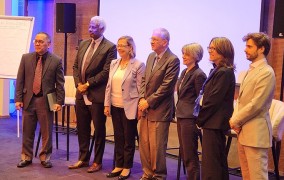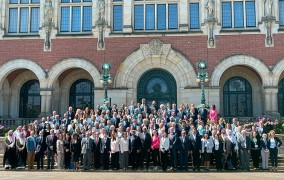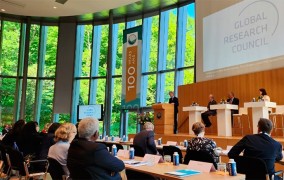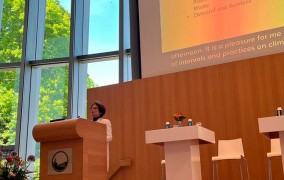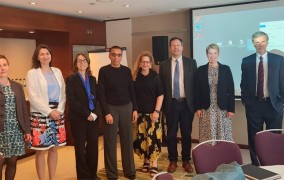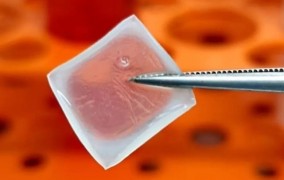
Search: 4362 news
-
Deforestation in Indigenous Territories caused emission of 90 million metric tons of CO2 in 2013-21
2023-06-28Scientists analyzed data for the period from 232 Indigenous Territories in Brazil. Results published in Scientific Reports show deforestation rates accelerating between 2019 and 2021. -
COVID-19 sequelae are the highlights of a neuroscience conference at the State University of Campinas
2023-06-28Brazilian researchers analyzed data from MRI scans and various tests to detect biological alterations linked to the neurological symptoms most reported by patients, especially anxiety, depression, sleepiness and fatigue. The latest results were presented to the ninth edition of BRAINN Congress. -
Mechanical ventilator maker supported by FAPESP wins approval to start producing in the United States
2023-06-28The FDA has authorized Magnamed to operate a plant in Florida that will produce Oxymag, its portable emergency ventilator. -
Green technology permits total use of seaweed by cosmetics industry
2023-06-21A review article goes beyond international standards to propose zero waste methodologies in the production of natural assets from marine organisms. -
Innovative technique obtains glass-ceramic materials faster and saves energy
2023-06-21The technique was developed at the Federal University of São Carlos (UFSCar) in São Paulo state, Brazil, and could impact the manufacturing of batteries, smartphone screens and other devices. -
Study proposes simple low-cost solutions to improve thermal comfort in social housing
2023-06-21As well as benefiting users, the aim was to contribute to energy saving and help reduce greenhouse gas emissions. -
Brazilian fossil provides earliest evidence of evolutionary trait that enabled dinosaurs to become giants
2023-06-21Bone cavities called air sacs appeared in the ancestors of long-necked dinosaurs about 225 million years ago, according to the analysis of a specimen found in Rio Grande do Sul state, South Brazil. The study also shows that air sacs did not evolve as linearly as scientists believe. -
Storm clusters are decreasing in the Amazon, study suggests
2023-06-21Scientists at the University of São Paulo have shown that the occurrence of mesoscale convective systems, which account for 40% of precipitation in the Amazon, is already being affected by climate change. -
Study identifies intracellular protein that can block inflammation in autoimmune diseases
2023-06-21The discovery, led by researchers at a FAPESP-supported center, could lead to novel treatments for autoimmune diseases. -
Experiment in Brazil identifies flood-prone areas of cities
2023-06-14The study combined models that predict urban expansion and land-use changes with hydrodynamic models, and the results were validated using actual data for São Caetano do Sul, a city in metropolitan São Paulo. -
Novel technology produces natural colorants with enhanced stability from grape residue
2023-06-14Resin applied to purification of compound can be reused in eight different cycles without loss of effectiveness. -
Researchers and university officials discuss metrics for social impact of science
2023-06-14The meeting at FAPESP was attended by Youngsuk ‘YS’ Chi, Chairman of Elsevier. -
Conversion of 5% of pastureland to cropland could double biofuel production, study shows
2023-06-14The data, referring to Brazil, Argentina, Colombia and Guatemala, was presented by the FAPESP Bioenergy Research Program (BIOEN) during a seminar hosted by the International Energy Agency. -
A 540 million-year-old fossil of an articulated animal can change how we understand evolution
2023-06-14Carapace resembling scaled armor used by medieval knights appears to be first evidence of defense against predators and linked to origin of large group of animals with bilateral symmetry, which includes humans. Advanced techniques including electron microscopy and tomography applied to rocks found in Brazil in the 1970s enabled scientists to reconstruct this animal’s morphology. -
Peptide from venomous fish toxin controls lung inflammation in mice
2023-06-14A research group at Butantan Institute performed tests on animal models with asthma as a reference and demonstrated that the peptide from Thalassophryne nattereri, common in North and Northeast Brazil, is safe and efficacious. -
New working group of the GRC is tasked with facilitating multilateral cooperation in science
2023-06-07First meeting was held last week in The Hague, Netherlands, during the Annual Meeting of the Global Research Council. -
An innovative crop sprayer drone with an automated refueling system
2023-06-07Brazilian technology developed with FAPESP’s support can be used to spray large or small areas, economizing inputs, lowering costs and mitigating environmental impacts. -
Brazilian algorithm aims to project future of Amazon Rainforest and predict changes in carbon capture
2023-06-07The computer program was developed at the State University of Campinas to include more vegetation diversity in the analysis of climate change impacts. -
‘New pandemics could emerge soon. We must be prepared,’ says head of Butantan Institute
2023-06-07Esper Kallás, who heads Latin America’s leading producer of vaccines, delivered the Second 2023 FAPESP Lecture on “Viruses, pandemics and vaccines”. He spoke about the “100 Day Mission” to produce novel vaccines in just over three months. -
Study identifies a protein that could be a target for a vaccine against spotted fever
2023-06-07The molecule was identified by researchers at the University of São Paulo in cells of the Amblyomma tick that transmits the disease. -
Projects on adolescent obesity and drinking selected by international consortium
2023-06-07The call was issued in 2022 by the Global Alliance for Chronic Diseases, a transnational consortium of research funders set up to combat chronic non-communicable diseases in low- and middle-income countries. Two proposals supported by FAPESP were among those approved. -
The choices we make in the near future will define the impact of climate change for generations to come
2023-06-07The alert came from scientists who participated in the 10th German-Brazilian Dialogue on Science, Research and Innovation, organized by the German Center for Science and Innovation in São Paulo in partnership with FAPESP. -
The quest for equity and inclusion in the research ecosystem has moved beyond the gender issue
2023-06-02This assessment was made by participants of an event promoted on Tuesday by the Gender Working Group of the Global Research Council. One of the panelists was Marco Antonio Zago, president of FAPESP. -
Funders discuss how to foster scientific collaboration amid growing geopolitical tensions
2023-06-02Debate was hosted by Swedish, American and Japanese research funding agencies at the Annual Meeting of the Global Research Council. -
International cooperation is key for tackling global problems and this underscores GRC’s strategic role
2023-06-02Representatives from 81 research funding agencies from 63 countries are meeting this week in The Hague, in the Netherlands, for the Annual Meeting of the Global Research Council, co-organized by FAPESP. In discussion, topics that will help shape the future of research around the world. -
Funding agencies from 63 countries ratify document for broader and more inclusive research
2023-06-02A charter of principles was ratified during the annual meeting of the Global Research Council. The goal is to establish common practices to assess the quality of the science produced and facilitate international collaborations. -
International scientific collaboration helps reduce regional disparities in tackling climate change
2023-06-02Assessment was made by experts at the third day of the Annual Meeting of the Global Research Council. During the event, practices on funding research on the topic were ratified by representatives of funding agencies from 63 countries. -
Scientific publishers and funding agencies unite in favor of racial and ethnic diversity in research
2023-06-02Initiatives developed by Elsevier, Royal Society of Chemistry, South Africa’s National Research Foundation and German Research Foundation were presented at event held in The Hague, Netherlands. -
Biodressing accelerates skin wound healing in diabetic mice
2023-05-31A biodressing containing human umbilical cord stem cells was produced in a 3D printer by the startup In Situ Cell Therapy. Researchers at the University of São Paulo found that when used on diabetic mice, the “smart” biodressing modulated the immune response, stimulated collagen synthesis and enhanced tissue repair. -
Study associates sleep apnea in babies with increased risk of hypertension in adulthood
2023-05-31In experiments involving rats, researchers at São Paulo State University found that periods of low oxygen levels in the first months of life can lead to dysregulation of the sympathetic autonomic nervous system, which controls functions such as heart rate and blood pressure. The discovery points to possible routes to the development of novel therapies.
Most popular
-
Amazon scorpion toxin kills breast cancer cells
2025-06-18
-
Spending more than 3 hours a day sedentary worsens teens’ mental health
2025-02-20
-
Climate change could drastically reduce aquifer recharge in Brazil
2025-09-17
-
Microplastics may affect bone health
2025-09-17
-
‘Science alone will not save us’: Paulo Jannuzzi highlights the need for republican values
2025-09-17
-
Butantan Institute says its dengue vaccine protects against serotype 3
2025-02-05
-
FAPESP aims to boost the development of quantum technologies in Brazil
2025-01-15
-
Molecule reverses cognitive deficits associated with aging and dementia in animal tests
2025-05-12
-
Ants defend plants from herbivores but can hinder pollination
2025-09-15
-
Personality traits influence the development of insomnia
2025-05-19





